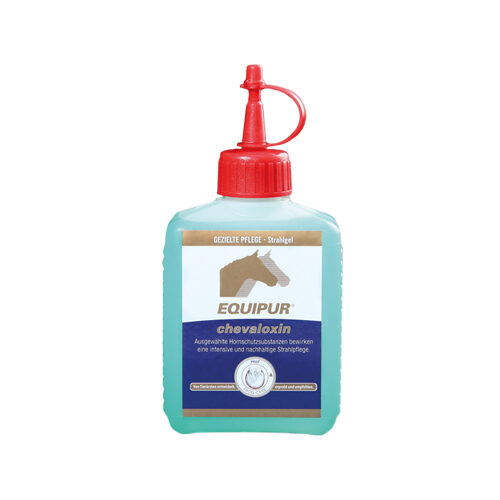Hoof Wall Problems
Problems with hoof walls are quite common in horses and can be caused by a variety of things. Crumbling hooves and cracks in the hoof wall or hoof angles are some of the more common hoof wall problems. To treat these problems it is important to determine the underlying cause and have a specialist set up a treatment plan. To provide additional support you could provide your horse with supplements that include biotine (vitamin H or vitamin B8), which can contribute to the quality of the hoof when given for a longer period of time.
Mud Fever
Mud Fever is a collective term for skin problems affecting horse’s lower limbs, particularly the back of the pastern. These skin problems are usually caused by bacteria, fungi or parasites. Additionally, environmental aspects, such as dirty stables and muddy paddocks, could be the source of the problem and even prevent the limbs from healing. This happens as a result of the continuously wet and dirty legs and is also the reason for mud fever being more common in horses with long hair on their legs.
Navicular Syndrome
Navicular syndrome is an inflammation or degeneration of the navicular bone and the flexor tendon, usually on (both of) the front legs. There is no single known cause of navicular syndrome. Horses with navicular syndrome can become lame, however, if the syndrome is present in both front legs the pain might be equal on both sides which can be expressed as lameness that switches from one leg to another or appear to have no lameness at all. If there is no visible lameness, stumbling or shortened strides could be a sign of navicular syndrome. A thorough examination is crucial.
Laminitis
Laminitis is a particularly painful and complicated inflammatory condition that affects horse’s hooves. Laminitis occurs when the laminae that bond the hoof wall to the coffin bone become damaged. Traction is caused by the flexor tendon on the back of the coffin bone, which can lead to “sinking” and, progression may lead to perforation of the coffin bone through the sole of the hoof. A horse with laminitis will try to lessen the pain by putting as much of its weight as possible on their hind quarter, also known as the “founder stance”, which has a very characteristic look. Laminitis can occur as a result of an unbalanced diet, a problem with the placenta after fouling or Cushing’s disease. It can also occur as a result of overburdening a leg, for example in the case of injury to another leg.
Thrush
Thrush is a common bacterial infection that occurs in the region of the frog on a horse’s hoof that may lead to lameness. Again, the main cause of thrush is the dirty ground or poor hoof care. Treatment can be a very intensive process; it can take up to a year for a fully healthy frog to regrow.
Hoof Abscess
A hoof abscess occurs when bacteria invade a horse’s hoof and multiply. The pressure of the abscess on the surrounding structures is very painful and the horse might not want to put any pressure on affected leg at all. Luckily, a hoof abscess can usually be treated easily and quickly; a veterinarian or farrier can drain the abscess. Once the abscess has been drained, the pain will diminish quickly, after which the hoof should be protected from dirt and debris to start the healing process.
Vetsend offer a wide variety of products for hoof and leg protection for horses, including the following brands: PrimeVal, Groene Os, Hippo, Pavo, Phytonics, Puur and Sectolin.








